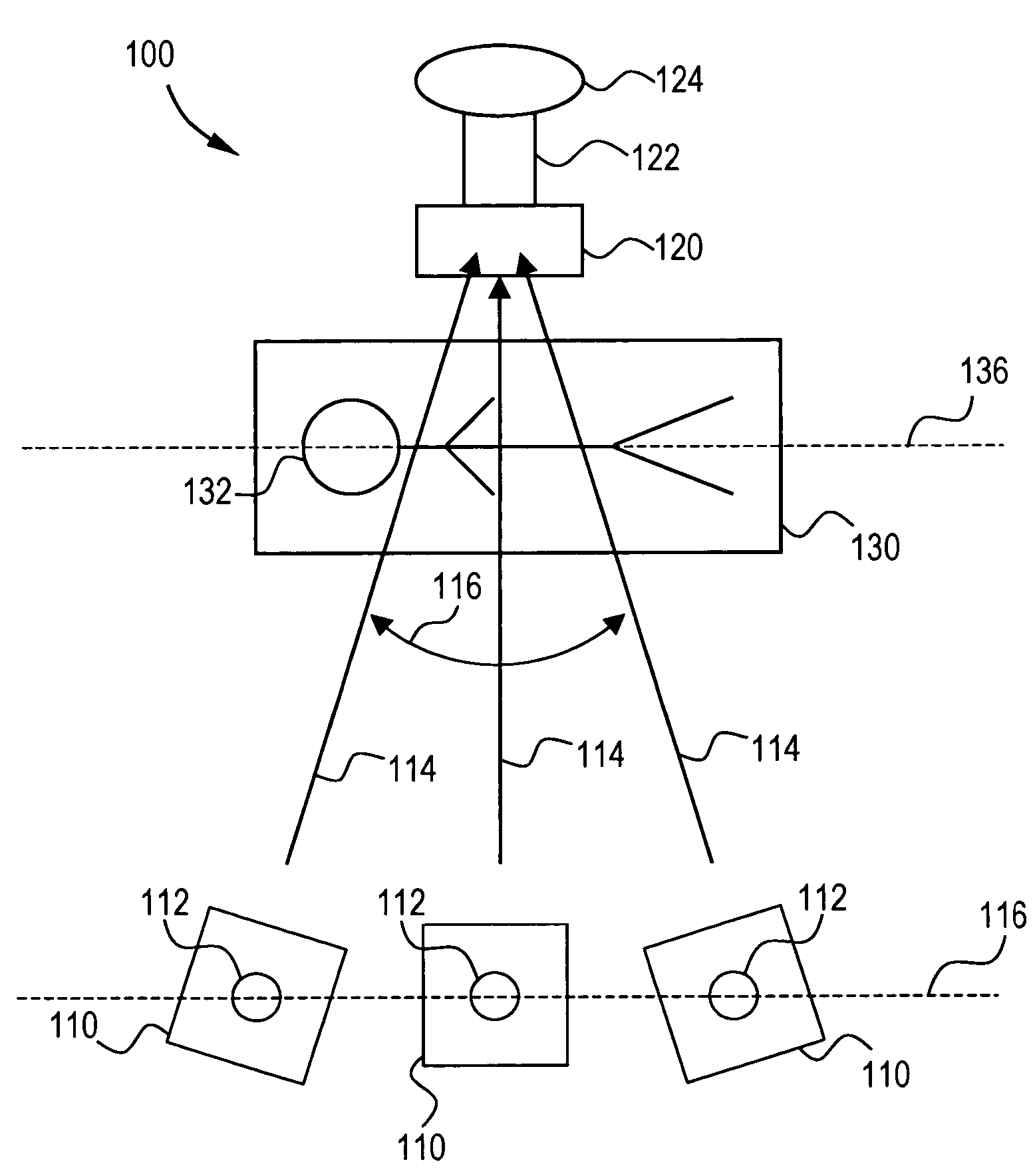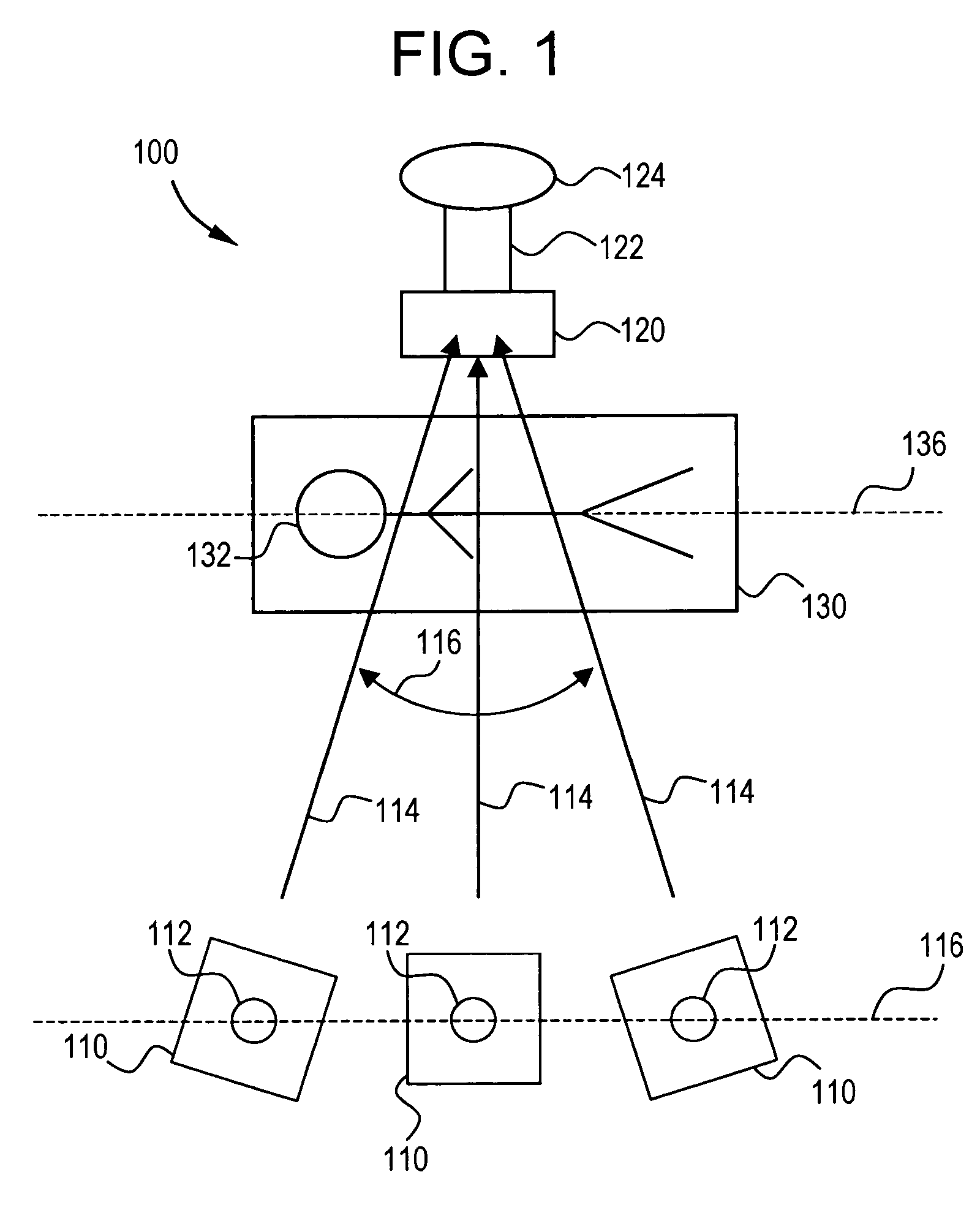System and method for cross table tomosynthesis imaging for trauma applications
a tomosynthesis and trauma application technology, applied in the field of tomosynthesis imaging, can solve the problems of not being able to differentiate between overlapping bony structures, unable to provide views through thick parts of the patient anatomy (for example, the shoulder), and the system may not localize the site of the injury in three dimensions
- Summary
- Abstract
- Description
- Claims
- Application Information
AI Technical Summary
Problems solved by technology
Method used
Image
Examples
Embodiment Construction
[0018]FIG. 1 illustrates a schematic diagram of a tomosynthesis imaging system 100 demonstrating an x-ray imaging device 110 in three example positions in accordance with an embodiment of the presently described technology. System 100 includes an x-ray imaging device 110 (illustrated in three example positions, herein referred to as a left, center, and right positions), an x-ray detector 120, and a patient surface 130.
[0019]X-ray imaging device 110 includes any device capable of emitting x-rays 114 useful for imaging a patient 132 or patient anatomy from a plurality of positions. For example, device 110 can include an x-ray tube. Imaging device 110 can also include a point of reference 112. Point of reference 112 can be useful in describing one or more paths of motion or trajectories that imaging device 110 may move relative to detector 120 and / or patient surface 130.
[0020]X-ray imaging device 110 may include a collimator (not shown). The collimator is configured to adjust a field o...
PUM
 Login to View More
Login to View More Abstract
Description
Claims
Application Information
 Login to View More
Login to View More - R&D
- Intellectual Property
- Life Sciences
- Materials
- Tech Scout
- Unparalleled Data Quality
- Higher Quality Content
- 60% Fewer Hallucinations
Browse by: Latest US Patents, China's latest patents, Technical Efficacy Thesaurus, Application Domain, Technology Topic, Popular Technical Reports.
© 2025 PatSnap. All rights reserved.Legal|Privacy policy|Modern Slavery Act Transparency Statement|Sitemap|About US| Contact US: help@patsnap.com



